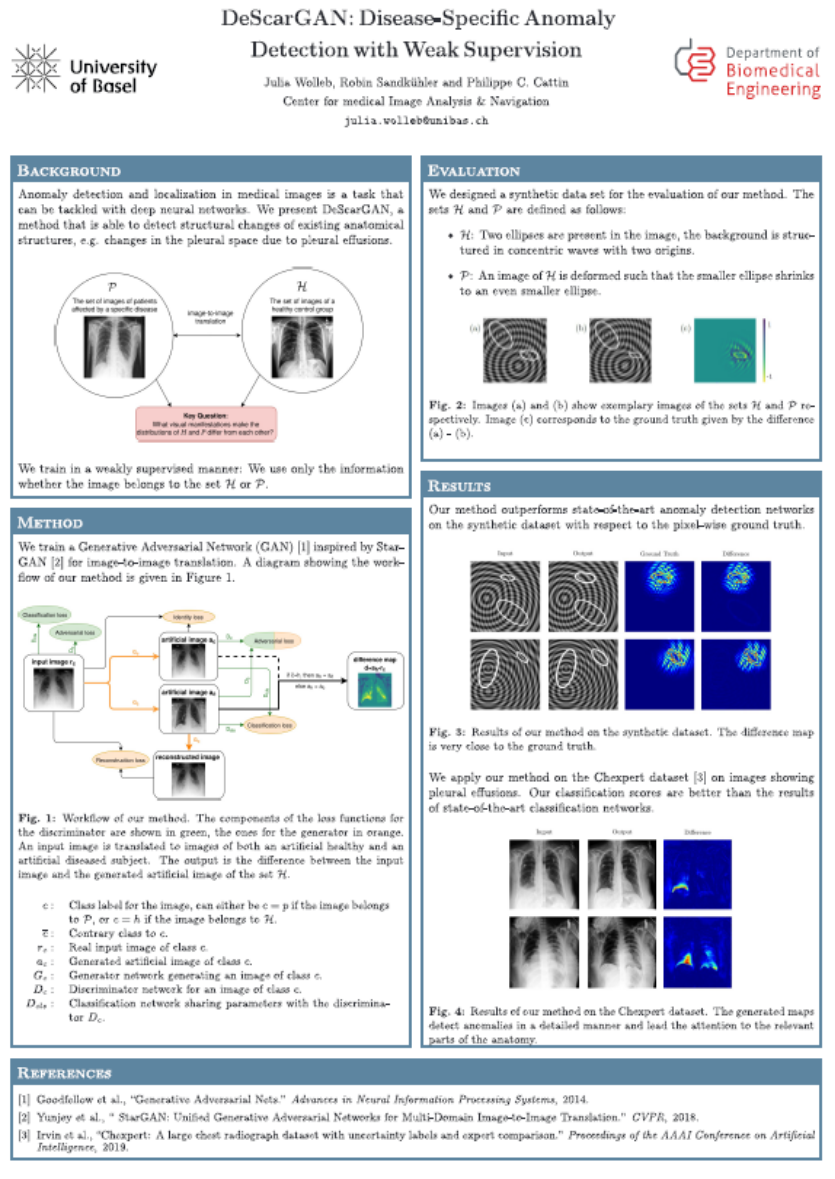Automatic Detection of Neurological Anomalies
For many neurological diseases the location and structural changes of the anomalous brain regions are still unknown. Using Artificial Intelligence approaches may provide an automated way to detect those hidden structures in pathological changes and to outline the affected brain regions. The scope of this project is to develop algorithms that are able to highlight anomalies in given images.
The pathological changes vary a lot from disease to disease. While brain tumors can be detected by bare eye, this can be more difficult in Alzheimer’s disease, where there is a change in volume in already existing structures. We search for a method that can find and outline the differences between a dataset with patients and a dataset with healthy subjects.
As manual samples may not be available for training of a neural network, we propose a weakly supervised algorithm that can bypass the manual rating of an input image by an expert. Weak labels are more easily available, not prone to a human bias and sufficient for our algorithms.
The hope is that this method will improve diagnosis, lead the physician’s attention to the relevant parts of the anatomy and also give new insights into the diseases. In the best case, its results may point out regions of interest that were not in focus previously. Overall, we aim for a more complete understanding of diseases that are not as well researched yet.
Project leader: Julia Wolleb






